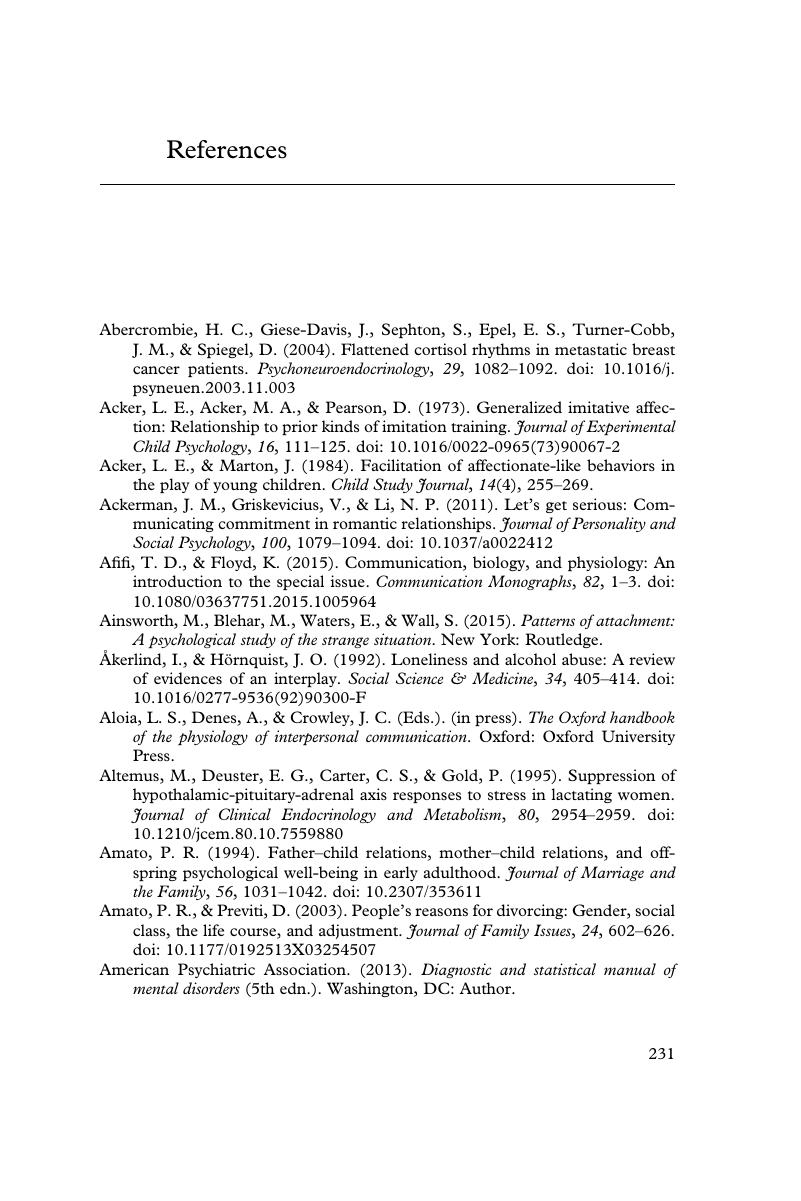Book contents
- Affectionate Communication in Close Relationships
- Affectionate Communication in Close Relationships
- Copyright page
- Contents
- Tables
- Preface
- 1 An Introduction to Affectionate Communication
- 2 Thinking about Affection
- 3 Encoding and Measuring Affectionate Messages
- 4 Predicting Affectionate Behavior
- 5 Decoding and Responding to Affectionate Messages
- 6 Communicating Affection in Various Relationships
- 7 Affectionate Communication and Mental Wellness
- 8 Affectionate Communication and Physical Health
- 9 The Dark Side of Affectionate Communication
- 10 Looking Back and Looking Ahead
- Endnotes
- References
- Index
- References
References
Published online by Cambridge University Press: 07 December 2018
- Affectionate Communication in Close Relationships
- Affectionate Communication in Close Relationships
- Copyright page
- Contents
- Tables
- Preface
- 1 An Introduction to Affectionate Communication
- 2 Thinking about Affection
- 3 Encoding and Measuring Affectionate Messages
- 4 Predicting Affectionate Behavior
- 5 Decoding and Responding to Affectionate Messages
- 6 Communicating Affection in Various Relationships
- 7 Affectionate Communication and Mental Wellness
- 8 Affectionate Communication and Physical Health
- 9 The Dark Side of Affectionate Communication
- 10 Looking Back and Looking Ahead
- Endnotes
- References
- Index
- References
Summary

- Type
- Chapter
- Information
- Affectionate Communication in Close Relationships , pp. 231 - 280Publisher: Cambridge University PressPrint publication year: 2018



